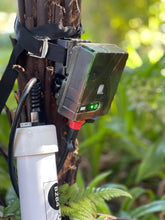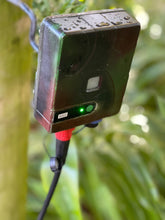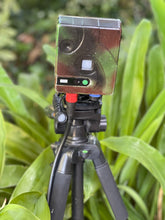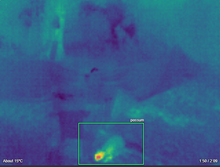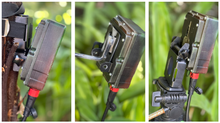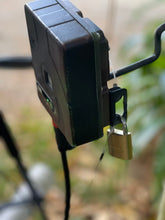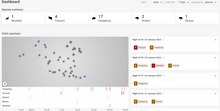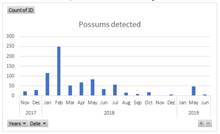
This page describes the DOC AI Cam audio bird monitoring functionality. See also: Thermal camera functionality of the DOC AI Cam
There are four audio modes on the DOC AI Cam:
- No audio, thermal video only
- Audio only, no thermal video
- Audio and video
- Audio or video: the audio only records outside of the video recording window.
When the audio recordings are enabled the camera makes one minute recordings at random times throughout the day. It does these at a rate of 32 recordings/day. These recordings are tagged with the location and time when they are created.
The audio recordings are uploaded to the cloud where they are analysed using machine recognition algorithms to identify birds automatically. The analysis also calculates a a Cacophony Index which is a measure of the amount of birdsong and how it changes over time. This provides the easiest, way of tracking what birds you have and how they have changed over time as a result of your reforestation and predator control efforts.
At the moment the model can automatically identify the following birds :
- bellbird
- bittern
- black noddy
- blackbird
- crimson rosella
- dotterel
- fantail
- frog
- generic bird calls
- grey warbler
- human
- insect
- kiwi
- noise: this is a generic sound that isn't a bird or some other sound that we're trying to recognise.
- norfolk gerygone
- norfolk robin
- rifleman
- rooster
- ruru/morepork
- silvereye
- sooty tern
- sparrow
- whistler
- white tern
If a human voice is detected, then by default the recording is deleted but the results of any other sounds identified are noted. This is to preserve privacy.
We hope to automatically identify other birds at some stage in the future. Please let us know if there are any in particular that you would like us to recognise. Although we can't identify these other birds now, it is still useful to make the recordings so they can be analysed retrospectively after we have the ability to automatically identify more birds.
The recordings and the AI generated tags can be reviewed on the Cacophony Portal. You can search for any birds that have been identified, listen to the recordings, correct any of the automatically generated tags that are wrong. This will help improve the accuracy of the automatic identification. You can add notes and labels and download recordings if you'd like to share them with others. You can also export the data to a spreadsheet for further analysis. Here's an example of an analysis that was done for predator free banks peninsula.
This video shows you the bird tagging interface on the Cacophony Portal.
Power usage
In bird monitor only mode the DOC AI Cam uses about 1.5Wh/day. This means a recycled Lime battery should last about 200 days. If you are recording thermal videos then the audio monitoring will make only a small difference to your battery life (3-10%).
Upgrade
To those of you who have bought the first version of our bird monitor, we offering a low cost upgrade. Please contact us for details.
View the Bird monitoring manual for the DOC AI Cam
Check out blog posts about the bird monitor
The bird monitoring uses about 1G of data per month. If you are only using bird monitoring then you can buy this monthly data plan, or use your own SIM.
There is an annual cost for storing and processing the audio and thermal recordings. The first year is included in the cost of the DOC AI Cam. Subsequent years will be invoiced to you directly.
The DOC AI Cam hardware and software, along with the machine recognition algorithms and cloud storage portal have all been developed by The Cacophony Project, a not for profit organisation. A proportion of the proceeds will be donated to The Cacophony Project so they can continue to develop technology to help New Zealand become predator free.









